© 2017 Joshua J. Wilson
© 2017 The Urantia Book Fellowship
¶ Four Urantia Movement Seasons so Far
This historical essay contains a prophecy, or if you prefer, likely trends of a Urantia movement future of soul- satisfying and God-revealing potentials. If this interests you, and you don’t like to read a lot of history and verbiage, you may go directly to part four. However, I think you’ll get more out of it by reading from here.
We are encouraged by Jesus to view history, and the “now,” and the future as a cycle, a whole. Cosmically minded persons report a sense of each moment as connected in a whole of time and experience.
Primitive man lived and died amid chaos—no event seemed related to anything else. Anything could happen, and he worked diligently over the millennia to wrest some sense and mean ing from life.
Next, thinking man describes his life events and history as moving along a timeline—linear thinking. This helps him somewhat to grasp a picture of trajectory, of motion, but offers little toward the ability to attach actual meanings and values to the unfolding of segmented, seemingly disjointed succes sive events.
Ascending, progressing man is blessed with an enlarging view of cycles, related cycles, even perfectly related cycles within a whole.
Although the cycle is displayed below, for convenience, as a spreadsheet, do not allow yourself to view it like a long tickertape of continuous numbers and dates. Rather, keep in mind the image of a clock, or tree rings, or the Earth orbiting the Sun, or a cross dividing four quadrants of concentric circles like the Truthseeker’s pendant, or the Celtic cross. This will help you to view these events as recurring, repeating cycles. Winter is welcomed here in the Southwest, and we’re always happy when the hot summer is past. Each season of the year has its special offerings, and we look forward to them with anticipation. We all but forget the past seasons until they cycle around again. Spring will return. This is a comfort to us all.
Two men, William Strauss and Neil Howe, discovered and developed Generational Theory. They have analyzed 500 years of Anglo-American history and have found that it repeats in specific characteristic patterns every 80 to 85 years (equivalent to a long human life span), comprised of four generational periods, or seasons, of 20 to 22 years each, similar to the four seasons of spring, summer, fall, and winter. You can read about it here: https://en.wikipedia.org/wiki/Strauss–Howe_generational_theory
One of their books, The Fourth Turning, analyzes and discusses the current period, the fourth of four seasons that the United States is now experiencing, and compares our time with all eighty-year periods going back to the beginning of the U.S. as a nation. The echoing patterns of history are compelling.
This essay analyzes the history of the Urantia movement within an 85-year span—from 1939 to the present—based on the model of the four seasons, on the Archetypes (Prophet, Nomad, Hero, and Artist), and the Moods (High, Awakening, Unraveling, and Crisis and Opportunity).
| Season | Archetypes | Mood | Years | Significant Events | |
|---|---|---|---|---|---|
| 1. Spring | Prophet (Idealist) | High | 1939–1960 | The “seventy” is formed; founding of Foundation and Brotherhood; first printing of the book |
|
| 2. Summer | Nomad (Reactive) | Awakening | 1961–1980 | Growth of study groups and societies; restrictions on name, symbol, promotion, and quoting |
|
| 3. Fall | Hero (Civic) | Unraveling | 1981–20 02 | Snowmass Conference; Family of God Foundation peaks; disenfranchisement, law suits, resignations; new Foundation trustees appointed |
|
| 4. | Winter | Artist (Adaptive) | Crisis & Opportunity |
2003–2024 | Surge in translations and international presence; Youth Committee of Fellowship begins; cooperation between Fellowship and UAI and “?” |
| 1. Spring | Prophet (Idealist) | High | 2025– | The institution-building future |
¶ First Season
Spring. Prophet (Idealist). Mood: High; 1939–
The key figure in this period was initially Dr. Lena Sadler. Her patient was the contact personality for the Urantia papers. She believed that the revelation was authentic, and it was Lena who collected the first funds to print the book. She and her husband, Dr. William Sadler, had been personlly prepared for decades by studying psychiatry abroad, ministering to the sick, teaching, and writing, and conversing with beings from other spheres—all before the first paper came through.
The heading “Prophet” as used by Strauss and Howe is not meant to apply here in a direct sense; but it was the Sadlers’ idealism, complemented by the support of many “soldiers of the circles,” that energized the pivotal early efforts to bring forth the Revelation. During this season, or generation, the study group of the Seventy was formed, the Urantia Foundation and the Urantia Brotherhood were created under Dr. William Sadler’s supervision, and The Urantia Book came into print. The mood was high, very high, as the teachings of celestials were finding their way into the hands of individual students around the world, study groups, and the first new societies.
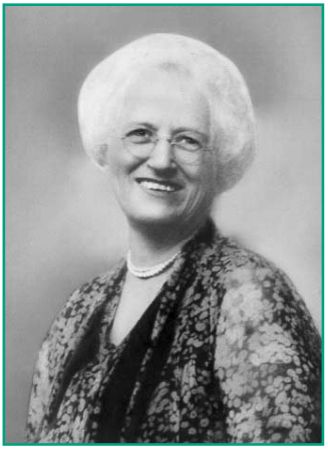
Strauss and Howe describe this generation as a time when,
“institutions are strong” and the group “is confident about where it wants to go,” although those “outside the majoritarian center often feel stifled by the conformity.”
This seems an appropriate insight, as the defining characteristic of this period in the Urantia movement was indeed the formation of Urantia institutions. If Egypt had kept to the one-God concept, it could have been the location of Michael’s seventh bestowal. No doubt other persons were considered for their role besides the Sadlers. It is the divine purpose in historical cycles that is essential, not the places or persons.
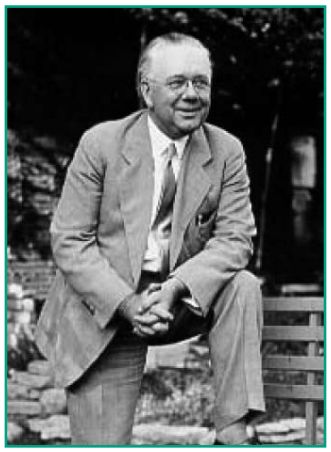
¶ Second Season
Summer. Nomad (Reactive). Mood : Awakening ; c. 1961–
In nature, summer is the time of greatest sunshine and substantial growth. Farmers and the animals of field and forest are on the move. We are awake. The fruits that budded in the Spring now require constant attention. In the Urantia movement many new study groups and societies came online. There were regional conferences and special study sessions. Secondary works were published, and leaders were learning how much effort is involved in translating the Book into other languages. But gatherings were also occurring that were not completely under the purview of the new institutions.
Attempts were made to somehow control these individuals and small groups in various ways, including asserting the ownership of trademarks for the word “Urantia” and the symbol of three concentric circles of blue on white. Both the institutions and the individuals/small groups found themselves going into reactive mode.
Strauss and Howe describe a Reactive generation as follows:
“This is an era when institutions are attacked in the name of personal and spiritual autonomy. Just when society is reaching its high tide of public progress, people suddenly tire of social discipline and want to recapture a sense of self-awareness, spirituality and personal authenticity.”
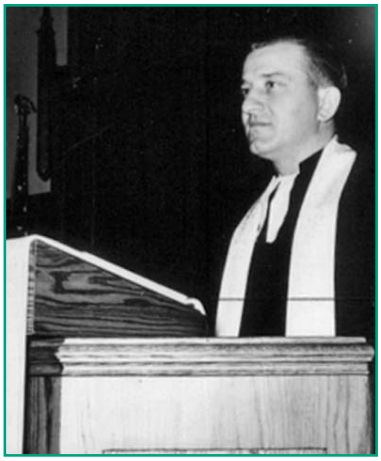
Dr. Meredith Sprunger was a significant voice during this Awakening period. He was a Christian minister and college president who came to know the Sadlers as a result of his sincere interest in the Revelation. Meredith embarked on a decades- long project of sharing it with the Christian community, and served closely with the movement in a number of posts.
As part of this awakening, Dr. Sprunger advocated greater openness:
The more open phase of our work will begin when we effect a more structured plan integrating activities and communications among all study groups and societies along with techniques and encouragement in finding and attracting people, who are ready, to The Urantia Book.
The more open phase of our work will begin when we work systematically in colleges and possibly later in theological schools in a quiet, conservative, objective, and largely personal contact of students and organize study groups in college communities.
Toward the end of this period, due to their mutual interest in college ministry, Dr. Sprunger corresponded with the young Vern Grimsley.
¶ Third Season
Fall. Hero (Civic). Mood: Unraveling. c. 1981–2002
In 1981 the international triennial conference of readers was held in Snowmass, Colorado. I and many others felt like heaven had come down to earth. We had a Revelation and the happy, shining people of God to share it all with. A most inspiring preacher, Vern Bennom Grimsley, was the keynote speaker. Vern had a radio broadcast in all fifty states and some stations outside the country, as well as on the Armed Services radio network. He fit the definition of a hero archetype, and this made matters all the worse when things went badly for him, and us.
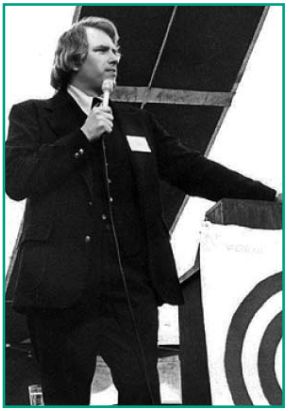
Vern began receiving “messages” and warned, in apocalyptic terms, of the soon outbreak of World War III on American soil. At first many thought, “Maybe he’s on to something. Maybe he knows.” After all, it had not been that many years since the Cuban Missile Crisis. It did not take long for many in the movement to think it over and then turn away; and when the predicted war did not occur, Vern’s Family of God Foundation and his radio ministry collapsed.
The Urantia movement had swallowed whole something it simply could not digest. In times past, when a grave policy decision loomed, the early leaders could arrive and pronounce that the midwayers or some celestial persons had spoken, and that promptly closed the matter. But in 1983 this sort of leadership style did not fly. The members of the Contact Commission had all died. That was then, this was now. The movement had to determine whether “messages” were now the way of guidance or not. And they decided against.
In this period the Teaching Mission came under the same scrutiny, for the same reasons. Their key belief was that the case against Lucifer had been adjudicated and completed, which would mean that the planetary communication quarantine had been lifted, thus opening the way for transmissions from supernal beings to be received.
This season was indeed an unraveling. The community was hit with a twofold punch. Vern Grimsley was lost as a charismatic and inspiring, successful leader on the very brink of even greater strides. And Martin Meyers, Foundation trustee, contributed to a dysfunctional Foundation governance, harassing a number of creative individuals and organizations. The atmosphere became exceptionally acrimonious, and the result was that the brotherly relationship between the Foundation and the Urantia Brotherhood was shattered—the Brotherhood was de-licensed and disenfranchised, largely over trademark issues… and who knows what else. Readers in France resorted to photocopying the French translation of the Book to keep their readership supplied, as if it were the underground days of the French Resistance. The copyright of The Urantia Book was lost to the Foundation, and came into the public domain after extended and costly legal battles.
David Elders, then president of the Fellowship, welcomed attendees at the 1990 International Conference at Aspen, Colorado, the largest conference up until that time. Mo Siegel brought in singer-songwriter John Denver for a fabulous evening concert, where John sang live, in duo with Russian singer and counterpart, Alexander Gradsky, who was on recorded video. The moving selection was “Let Us Begin (What are we making weapons for?)” https://youtu.be/1OXzigSimKg
The first Urantia scientific symposiums were held. The premier website Truthbook.com came online during these years. Urantia Book Fellowship conference attendance peaked in 1996 at a wonderful gathering at the university campus in Flagstaff, Arizona. In this Hero era, thirty-two Planning Committee members worked for three years in preparation for the conference under the direction of Janet Farrington as IC96 Conference Chair. A fun, full-fledged 1940s style Country Fair was enjoyed. But conference attendance lessened in the years following.
Mo Siegel and Gard Jameson, members of the Fellowship’s Executive Committee, became Urantia Foundation trustees in 1998, and they with the other trustees and staff set about unwinding the many and messy difficulties of the Foundation and setting it upon a better path. Mo brought considerable social and business acumen to the fore, and Gard brought a spiritual sensibility gained from his experience and depth of religious insight. Not all were immediately pleased with the direction and policies of the Foundation Board of Trustees, but gradually goodwill began to replace discord. Successful transla tion efforts grew considerably.
Strauss and Howe describe the Unraveling generation in these terms:
“The mood of this era is in many ways the opposite of a High: Institutions are weak and distrusted, while individualism is strong and flourishing. Highs come after Crises, when society wants to coalesce and build. Unravelings come after Awakenings, when society wants to atomize and enjoy.”
I think Strauss and Howe manage to hit the mark once again, correctly describing this kind of era. Atomization is defined as a process of breaking down into essential, atomic, individual components. Dick Johnson and his Arizona friends set up the Agondonter Fund to help Kristen Maaherra, formerly of Tucson, with her legal battles regarding the copyright suit brought against her for distributing the Urantia papers digitally. An Agondonter is one (an individual) who can by faith believe without seeing, and persevere even when isolated. A number of ad hoc, independent organizations formed, and numerous individuals and small groups decided to just hunker down, keep plowing when possible, and wait for the storm to pass.
Although a number of persons could be mentioned, at least three individualists typify this era: Vern Grimsley, a strong and gifted individual who unfortunately succumbed under a sophistry; Martin Meyers, dangerously ultraindividualistic; and Kristen Maaherra, a sincere individual who stood for her conviction against all odds.
So, in this time of the Hero and Unraveling, two things happened. The institutions, hard won during the preceding two generations, were preserved and reformed; and the importance of the individual was revealed and seen.
There were heroic efforts and achievements in both directions, institutional and individual, during this evolutionary struggle for growth. God is both our source and our destiny. We have relative free will within prescribed finite limits.
God is the author of history, and we are the players and, in a sense, coauthors, as the storyline twists and turns according to our temporal decisions. The progressions toward destiny, even final destiny, are played out in universe ages, planetary mortal epochs, the march of civilization, and the lives of nations, churches, organizations, families, and individuals.
I would even go so far as to say that our personal and group history is, in a way, predestined. That is an interesting, rare word that appears in the Revelation [UB 110:2.1]. Our Adjusters begin their work with a foreordained plan for our ideal lives. It is our choice to accept or reject any or all of the plan. Is it possible that our Urantia community under seraphic supervision also has a model plan?
Generational Theory is a starting point for considering this idea. The goal of a good historian must be to make astute observations of the patterns of history. By making such inquiries, we can better understand our past, present, and potential future within the fabric—the warp and woof—of the material and the spiritual. This is the substance of our evolving lives, both individual and group, in our finite universe experience.
¶ Fourth Season
Winter. Artist (Adaptive). Mood: Crisis and Opportunity****. c. 2003–2024
Winter puts the plant and animal world into crisis. Resources are scant, and stored reserves are essential for survival. The adaptive artist plies his craft whether or not the hierarchy is able and willing to help. He writes his symphonies alone by candlelight. She paints on a lonely hillside, capturing the contours of the waving wheat. The writer makes his observations and quietly commits them to paper. The dancer cannot help but dance. Lack of income or resources may perhaps only spur them on to creativity. One day, their work may be read or performed to throngs of admirers or viewed in galleries or in the media, but who knows? And sometime a real musician may appear and forever change the course of world history for good.
The concert pianist from Germany, Urs Ruchti is a good example of an artist who made an important difference during this season. He was the chief translator of The Urantia Bo o k into the German language, heading up the team that brought us Das Urantia Buch.
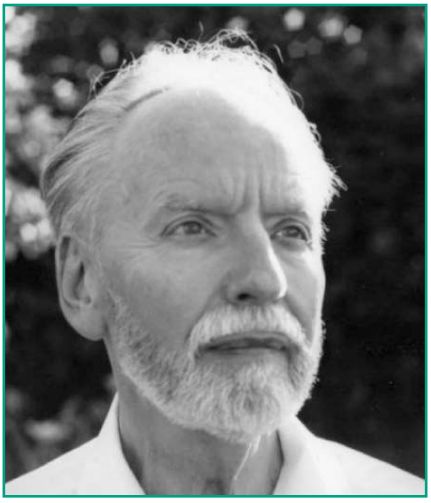
In the Urantia community, new ties and fellowship are being fostered in many countries, and the Urantia Association International (UAI) makes plans, travels, and visits new believers around the world. It is simply the work that must be done. A surge of new and pivotal foreign translations are completed or are underway. The new Fellowship committee, YaYAs (Youth and Young Adults) has been formed, and the youth are engaged. Truthseekers has introduced many young people to love and caring in a fun environment. New websites are online. A profusion of movies, soundtracks, and media enterprises have been undertaken, mostly as independent efforts.
Musician Cristina Seaborn informed me that the things that conference attendees reported on questionnaires as “most important” to them were meeting fellow believers and friends old and new, and the music. The artist can inspire worship, transforming an ordinary gathering into a time of spiritual communion.
The Gen-Xers and the Millennials are the age groups who are maturing into their most productive years, and moving into position during this time of Crisis and Opportunity. They have a great relationship with and share many of the same interests as their Boomer parents, are highly adaptive, and are much more positive in their outlook than the generations that preceded them. Their pensive elders find this fact surprising, but see that it is nonetheless true.
If I mention Woodstock to a Millennial, it may mean little or nothing. They weren’t even born then. To them, the trials of the Urantia community in previous generations are a historical footnote, apparently important but events that happened a long time ago.
Strauss and Howe observe this fourth season in this way:
“Artist generations are born after an Unraveling, and during a Crisis, a time when great dangers cut down social and political complexity in favor of public consensus, aggressive institutions, and an ethic of personal sacrifice.”
“This is an era in which institutional life is destroyed and rebuilt in response to a perceived threat to the nation’s survival. Civic authority revives, cultural expression redirects towards community purpose, and people begin to locate themselves as members of a larger group.”
The improving efforts of The Urantia Book Fellowship and the Foundation’s fraternal organization, the Urantia Association International, to cooperate in kingdom- building projects is a noteworthy example of carpe diem—seizing the day of opportunity during critical times. There is a great difference between the actions of various harmonized groups working together, and the specter of sectarian division. Just because two groups are distinct does not mean they are divided or must remain aloof. The Fellowship and the UAI can multiply their efforts even fourfold through cooperation, like the interplay of two partners, two countries, a man and a woman, or two fruit trees that pollinate each other. This is unity.
A man and a woman long to be unified in their purpose together. The romantic desire to return to a golden age when all was one may be a sentiment based more on myth than reality. We cannot return to the trumpet blasts of an earlier time; we must proceed from where we now find ourselves. Time will tell.
¶ The Future
Finishing the current Winter (Artist-Adaptive, 2003-2024) and preparing for the next Spring (Prophet- Idealist, 2025 - )
Only eight years, from the time of this writing, remain in this current Artist-Winter cycle of 2003 to 2024. Strauss and Howe explain that some seasons may be shorter or longer, as seen in nature and in real life. My analysis of dates may not be exact, but I think it is reasonably close to real events that we have knowledge of. At any rate, in this model there appears to be a remaining window of time that will allow us to properly process in our thinking that which has come before, make currently needed adjustments, and prepare for the next season—one that will bring us again to an Idealist-Spring of new budding growth and development. There is enough time to accomplish what is now needed, but the time frame is not unlimited; it has bounds.
I truly believe that the divine is orchestrating our community’s progress toward its destiny. We hope and pray that our leaders will lift the baton and faithfully conduct according to the divine musical score, and that each section will play its part without squeaking or losing tempo.
The entire 80-to-85-year cycle begins again in 2025 for the Urantia community. The Gen-Xers and the Millennials will take the helm of progress as they enter their more influential, productive time of service between 35 and 60 years of age. This new long cycle will return us to the beginning of the story, a circular simultaneity re-cycle of the Spring Prophet-Idealist High during which Drs. William and Lena Sadler did their valuable work in the 1930s and beyond.
Interestingly, the Strauss-Howe analysis of the current U.S. eighty-year time-circle nearly matches the Urantia movement’s time-circle I have described. By all accounts, the United States and Europe are heading into unsteady times. I would be remiss to not point out that our organizational Crisis-Opportunity season could, with increasing intensity, be experienced as actual and material, not merely philosophical! This time of institutional deconstruction and reformation is still underway. Our movement’s progress happens in the context of U.S. and world development. The key global shift now is the movement from a unipolar world largely under U.S. direction to a multipolar world system. It seems that the universe rulers assist us to confront the very challenges necessary for our next stage of growth, even if they be difficult. Oftentimes the responses to our prayers and desires for change are most surprising to us when an answer suddenly arrives with powerful, sweeping motion on the scene of human events.
Will our new, future leaders create an educationally based movement of evangelistic enterprises, seminaries of a new type and order, new kinds of study groups and societies, new-concept churches, schools and gardens for children? Whatever they will do, my plea is that we prepare the soil for them to have the maximum freedom to follow the leading of the Spirit.
The Baby Boomer generation has taken its turn, and its leadership has been dominated by lawyers and businessmen. I do not say this by way of criticism. Their efforts have established our institutions, and that is part of a normal evolutionary progression. However, this generation and the next must move toward giving education over to teacher- philosophers and scientists.
Education recently passed from the control of the clergy to that of lawyers and businessmen. Eventually it must be given over to the philosophers and the scientists. Teachers must be free beings, real leaders, to the end that philosophy, the search for wisdom, may become the chief educational pursuit. [UB 71:7.4]
The quality of our efforts over the next ten years will prove decisive in preparing for a new springtime of life and growth. There will be revival, but the only thing about it that I’m sure of is that it will come in ways unexpected but highly effective. Jesus said, “You hear the sound of the wind, but you know not where it comes from or where it is goi ng.”
¶ Seeing, observing correctly
Especially in this fourth generation we’re now in, the Artist, we would be wise to listen to what the artists have to say about seeing correctly. The author of the number- one how-to bestseller on learning art, Kimon Nicolaides, included in his classic book The Natural Way to Draw, the following insight:
“Correct Observation. The first function of an art student is to observe, to study nature. The artist’s job in the beginning is not unlike the job of a writer. He must first reach out for raw material. He must spend much time making contact with actual objects.
Learning to draw is really a matter of learning to see—to see correctly—and that means a good deal more than merely looking with the eye.”
Prophets have also been called seers, which means “seeers.” The prophet Daniel described the great kingdoms of this world as successive empires that he saw, or envisioned, as the statue of a man. Babylon’s King Nebuchadnezzar (ruling in Daniel’s time, circa 600 B.C.) was described as the head of gold; the Persian empire as the breast and arms of silver; the Greek as the waist and thighs of bronze; and the Roman Empire as legs of iron, terminating in feet of unstable mingled iron and clay [UB 135:3.2]. In Daniel’s vision, the world kingdoms, came to an end when a “rock from the mountain, not cut by human hands” struck the feet of the image, whereupon the state of the worldly kingdoms collapsed and God’s everlasting kingdom was established in the earth. John wrestled to understand this image and vision, seeking to find his place in history, which he successfully did, as the forerunner of Christ.
According to the Book, rugged John the Baptist read this description of the statue in the Scriptures “a thousand times.” [Ibid] We should be willing to read it at least once. (See Daniel 2:32).
The defining quality that made both Daniel and John the Baptist prophets was their diligence and commitment to see and understand that which was available to anyone willing to look thoughtfully, and then to comprehend the spiritual meaning in the context of history.
Our exercise is precisely the same. I plead with you: let us follow Jesus’ admonition to view time as unfolding in recurring and perfectly related circles, or cycles. Then prophecy is not a thing mystically not understandable, but rather is knowable under the guidance of the Spirit of Truth poured out upon all. Would you be willing to read the chart of Urantia movement periods on page 3 of this essay three or four times, and pray on it?
My prediction is that in the institution-building Spring beginning about 2025, new Urantia Revelation–based institutions, or their kernels will be formed. Some possibilities could include:
- Seminaries, some maturing into colleges and universities attracting students world-wide
- Health initiatives, some maturing into clinics and hospitals
- Family-formation and -support ministries
- Garden projects (horticulture is the most human of all human activities)
- Media companies, including arts and news, some with an evangelistic purpose
- Charter schools for children’s education
- Churches and retreat centers
- The unknown and unimagined
We must steel ourselves, brothers and sisters. To make the above a reality will require the recruiting of philosophers, scientists, ministers, school teachers, doctors, nurses, social service workers, horticulturists, media executives, artists, evangelists, school administrators, hospitality workers, webmasters, information specialists, businessmen, and philanthropists. Many are out there in our culture. Hundreds and thousands of them must be converted to the divine cause. There is no other way. Call it a prophecy or a challenge, as you wish.
It could be a most fulfilling and even thrilling time. This, I believe, is our next move.
Joshua J. Wilson is a pianist, composer, pastoral counselor, and essayist who writes on historical and scientific subjects harmonizing science, philosophy and spirituality. He holds a bachelor’s degree in Business Administration and Decision Information Systems, specializing in Human Behavior in Organizations, and certificates in Not-for-Profit Management and Active Parenting Instruction. Hobbies include camping and hiking.
¶ References
- Article obtained from The Fellowship site